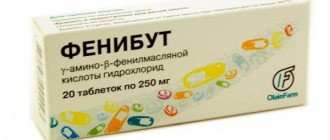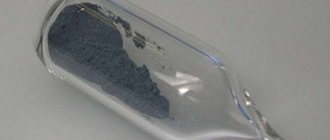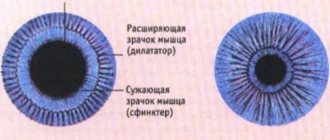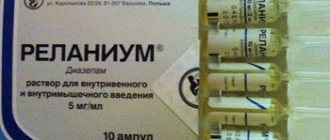Beneficial properties of almonds
Almonds are rightfully considered a symbol of happiness and prosperity, especially if you remember that the main treasure of a person is health. Due to their composition, different varieties of almonds are used in the food industry, cosmetology and pharmaceuticals.
Almonds are prescribed for vitamin deficiency; they contain little cholesterol, activate metabolism, and help remove toxins from the body. Nuts have a beneficial effect on the digestive system. It is believed that almond kernels increase potency, promote hematopoiesis, and help remove sand from the kidneys.
The nut enriches the body with vitamins A, C, E, PP, B vitamins, contains various macro- and microelements, including Ca, P, Mg, K, Cu, Na, Zn, Mg, Mn, Se, monosaccharides, fiber and various enzymes. also contain hydrocyanic acid , which is produced from amygdalin - and this is where the danger lies.
What will happen if you use the product every day?
Eating almonds every day in accordance with the daily norm and in the absence of individual intolerance and allergic reactions to the product brings only benefits to the human body, since the nut contains a fairly large amount of:
- vitamins;
- micro- and macroelements;
- fatty acids;
- squirrel.
The presence of almonds in the daily menu can replace many vitamin complexes and even medications. Its effect on the body is as follows:
- increases the elasticity of blood vessels and strengthens the heart muscle, thanks to the content of unsaturated fats, amino acids and minerals;
- normalizes blood circulation;
- removes excess fluid from the body;
- strengthens teeth, nails and the entire skeletal system due to the high content of B vitamins;
- promotes good brain function, prevents dementia and dementia;
- normalizes blood pressure;
- the presence of plant antioxidants improves sleep, relieves insomnia and seasonal depression;
- lowers the level of “bad” cholesterol, thanks to the fatty acids in its composition;
- normalizes digestion processes;
- helps remove sand from the kidneys and bladder;
- removes inflammation of the gastrointestinal tract;
- is a good choleretic agent;
- due to the high content of non-enzymatic tocopherol, it prevents the development of anemia and restores a sufficient level of hemoglobin in the blood, minimizing the possibility of spontaneous abortion;
- improves vision;
- folic acid contributes to the proper development of the fetus during pregnancy;
- reduces the risk of heart attacks and strokes;
- promotes tissue regeneration;
- normalizes the activity of the nervous system;
- cleanses and heals the skin;
- strengthens hair;
- normalizes metabolic processes, increases metabolism levels;
- replenishes the lack of protein in the body;
- eliminates heartburn;
- improves potency;
- helps cope with hangover syndrome;
- the presence of vitamins E, A, and C slows down the aging process, helps normalize hormonal balance and the menstrual cycle in women, and reduces the likelihood of malignant tumors;
- improves memory;
- increases resistance to viruses and infections, improves the overall tone of the body.
Possible harm and causes of poisoning
The harmful properties of almonds include high calorie content (575 kcal/100 g), so they are contraindicated for people with increased body weight. It is undesirable to use the nut for serious disorders of the cardiovascular and nervous system.
The risk of poisoning increases if the nut is stored incorrectly. The reason for this is the substance amygdalin . The most dangerous are bitter almonds (they can contain up to 3% of a toxic substance).
Bitter almonds, the record holder for the specific content of amygdalin in the seeds:
- almonds - 2.5-3%,
- apricot - 1-1.8%,
- peach - 2-3%,
- plum - 0.96%,
- cherry, sweet cherry - 0.8%,
- apple tree - 0.6%.
Once in the digestive tract, amygdalin forms hydrocyanic acid (cyanide), and therefore can lead to serious intoxication. For this reason, bitter almonds can be consumed only after heat treatment, and giving bitter nuts to children is prohibited.
Sweet varieties of almonds can also lead to poisoning, for example, when overeating. Almonds should not be eaten expired. If the nuts are not thoroughly washed and dried before selling, mold or mildew may form on the surface of the kernels. Unscrupulous producers by excessively treating nuts with pesticides also make their products dangerous.
Why can’t you eat a lot and what happens if you overeat nuts?
An overdose of almonds is fraught with unpleasant and even dangerous side effects and leads to undesirable consequences.
Gorkikh
- Itchy skin and rashes on the skin.
- Cramps and pain in the stomach.
- Impaired kidney function, edema.
- Nausea and vomiting.
- Disruption of the pancreas.
- Headache
- Dizziness.
- Diarrhea, bloating.
- Breathing problems.
Advice
Bitter almonds are not recommended to be consumed in their pure form and without heat treatment, as this can lead to poisoning. The product should not be consumed by pregnant women and nursing mothers, or given to children.
Sweet
- Gaining excess weight.
- Allergic reactions and the emergence of a tendency to allergies.
- Headache, fatigue.
- Indigestion.
- Diarrhea or, conversely, constipation.
Article on the topic
The difference between bitter and sweet almonds.
Symptoms of almond poisoning
If a person who has unknowingly consumed almonds develops an allergy to them, this is determined by symptoms in the form of itching and redness of the skin, swelling of the larynx, and a feeling of lack of oxygen.
You should not test for yourself what will happen if you eat a lot of almonds: if you overeat the nut or consume low-quality products, symptoms of toxic infection appear. At first, this is expressed as a feeling of bitterness in the mouth, increased salivation, complemented by nausea and vomiting. Sensations in the intestinal area may be accompanied by cutting pain. All this characterizes a mild degree of poisoning.
Further, headache, difficulty breathing, and weakness are added to the symptoms. Signs of severe poisoning include changes in the color of the skin and mucous membranes - they turn pink. The emerging arrhythmia is a serious concern. The patient may lose consciousness. In the worst case, intoxication is accompanied by convulsions and damage to the respiratory center, which can be fatal.
At what age can children
The age at which this fruit is recommended for a child is 2 years. Before this, it cannot be properly absorbed by the child’s body. The benefits of almonds for a child’s body depend on the amount of nuts eaten and the form in which children eat them. The healthiest thing is a fresh or slightly dried product; roasted nuts should not be given. You can make homemade paste from ground fruits, as in this video.
But store-bought almond pastes are not recommended for baby food, since they contain preservatives, stabilizers and other additives that have no business in a child’s body.
Another danger is possible poisoning from bitter almonds, i.e. kernels of garden drupes (apricot, plum and others), in which the content of hydrocyanic acid is much higher. Small children only need to eat a few of these grains to become poisoned.
An equally common question asked by young mothers is: is it possible to eat almonds while breastfeeding and how can they harm the body of the baby and the woman. Find out more information on our website.
Consequences of poisoning
If assistance is delayed, severe almond poisoning can provoke heart rhythm disturbances, in particular bradycardia (slow heart rate). Another consequence of intoxication is anemia (anemia) - and this is extremely ironic: in small quantities, almonds are prescribed precisely for hematopoiesis. Severe intoxication is accompanied by clouding of consciousness and hallucinations that require specific treatment. Eating large amounts of almonds can cause liver problems.
Vitamins and minerals contained in almonds
Vitamins:
beta-carotene – 0.02 mg, A – 3 µg, B1 – 0.25 mg, B2 – 0.65 mg, B5 – 0.04 mg, B6 – 0.3 mg, B9 – 40 µg, C – 1 .5 mg, E – 24.6 mg, PP – 6.2 mg, choline – 52.1 mg.
Minerals:
calcium – 273 mg, magnesium – 234 mg, sodium – 10 mg, potassium – 748 mg, phosphorus – 473 mg, chlorine – 39 mg, sulfur – 178 mg, iron – 4.2 mg, zinc – 2.12 mg, iodine – 2 mcg, copper – 140 mcg, manganese – 1.92 mg, selenium – 2.5 mcg, fluorine – 91 mcg.
Read useful information about other nuts:
Cashew Walnut Brazil nut Chestnut Pine nut Coconut Nutmeg Pistachio Hazelnut Macadamia
First aid for almond poisoning
Providing assistance to the patient must be immediate. When the first signs of intoxication appear, it is necessary to provide a set of actions to remove the toxic substance from the body and prevent the development of severe poisoning.
Mild intoxication goes away in a few days, but if the patient is diagnosed with moderate to severe poisoning, calling a medical team is mandatory. The same applies to children and pregnant women with signs of any form of poisoning. Intoxication measures will be carried out in the toxicology department of the hospital, where drugs aimed at normalizing the victim’s condition are selected, specific antidotes are prescribed and a special diet is developed.
The range of actions to provide emergency care at home should include measures to remove toxins from the body. The patient needs to drink several glasses of water to provoke a gag reflex. This must be repeated until the vomit no longer contains any impurities. When treating poisoning, it is recommended to use sorbents (including activated carbon). After cleansing the stomach, the patient should brew sweet tea: sugar is the antidote to hydrocyanic acid.
It is important to prevent dehydration of the body: you need to drink as much fluid as possible, but in small portions, so as not to cause vomiting again. It is recommended to use the drug Regidron .
It tastes unpleasant, so for children it can be replaced with a solution of similar properties: a glass of water, a teaspoon of honey and half a teaspoon of lemon juice.
How to eat almonds correctly for the greatest benefit
A common question is: why soak almonds before eating? Answer: to increase nutritional value.
Soaking reduces the concentration of phytic acid. This is a common problem with all nuts, grains and seeds. Phytic acid slows down the absorption of calcium, magnesium and iron.
Almond skin contains the most phytic acid.
Ideally, we need raw, peeled almonds that have been soaked in water with salt or acid. Maximum benefit - minimum harm.
How to soak almonds and other nuts?
We take:
- Nuts - 1 cup
- Water - 2 glasses
- Salt - 1 teaspoon
- Glass bowl/jar.
Fill overnight, up to 12 hours in a row. We take it out and carefully clean it.
Another way to eat almonds correctly for the greatest benefit is to blanch the nuts by pouring boiling water over them for 1 minute. Next, drain the water and peel off the skin.
And if you boil the kernels for 2-3 minutes over medium heat, even a child can quickly clean them.
The video shows 2 ways to peel almonds.
Prevention of poisoning
To avoid poisoning, follow simple rules. Almonds should be purchased from reputable food retail outlets. Particular attention should be paid to the appearance of the nuts and their shelf life (shelf life, 2 years).
At home, the product must be kept in a closed container in a dry place, protected from sunlight, taking into account that the nut absorbs foreign aromas. If the taste or smell of almonds seems unpleasant, it is better not to eat them.
Almonds are an allergenic product; their nuts are high in calories and are useful only in moderation, so you should refrain from overeating them. The daily intake of sweet almonds for an adult is 8-10 nuts (30-50 g). Bitter almonds should not be consumed raw.
Types of almonds
There are about forty different types of almonds, but let's talk about the most common three of them:
- Bitter almonds contain amygdalin glycoside, one of the most dangerous toxic substances.
- Sweet almonds, the fruit of which is distinguished by its sweetness, have much less glycoside. Mainly used as a spice, in particular for preparing fish dishes.
- Fragile almonds, the shells of which are very thin and particularly fragile, and the stone fruit is very sweet.
What is the difference between almonds and apricot kernels?
Inattentive consumers fall for the trick of unscrupulous sellers, purchasing apricot kernels instead of expensive almonds. Often such deception is used in the production of dry nutritional mixtures (for example, nut mixes). An apricot kernel is not an almond. They also contain hydrocyanic acid: already 20-30 g of apricot kernels are dangerous to health.
Almonds and apricot kernels are visually different, the main thing is to know what to look for. Firstly, the size: the apricot pit is smaller. Secondly, the shape: the kernel of apricots is rounded and flattened on the sides, while almonds are elongated, pointed and convex.
Despite the abundance of nutrients, almonds can also cause damage to health: they are high in calories, can cause allergies and contain amygdalin, which forms hydrocyanic acid. To avoid poisoning, you need to adhere to a number of rules, the main of which is care when choosing a product and moderation in its use.
What is almond and its chemical composition
The Mediterranean and Central Asia are considered to be the birthplace of almonds. By and large, this is not a nut, but the fruit of a drupe tree, which belongs to the Rosaceae family. Since ancient times, the cores of almond seeds have been used to treat male ailments and complications of the gastrointestinal tract.
The rich composition of almonds makes it a unique product, incomparable in properties. It has an exquisite taste and aftertaste, saturates the body with calories, and due to the fats, proteins and carbohydrates it contains, it provides a lot of energy.
In 100 grams of almonds:
- 645 kcal
- Proteins-18.6 g
- Fats-57.7 g
- Carbohydrates -16.2 g
- Glycemic index (GI) – 25
30 grams of almonds contain up to 49% of the body's daily need for vitamins and micro-macroelements. On average, this is 20-25 nut kernels.
Contains:
- Group of vitamins B (B1; B2; B3; B5; B6; B9.);
- Vitamin E;
- Magnesium;
- Manganese;
- Phosphorus;
- Calcium;
- Zinc;
- Iron;
- Selenium.
The nuts contain:
- arachidic, palmitic, stearic, myristic, margaric acids;
- amino acids – tryptophan, pyridoxine, thiamine, folacin, tocopherol, riboflavin;
- saturated fatty acids - linoleic, oleic.
Benefits for the digestive system
Considering the benefits and harms of roasted almonds, I would like to note the beneficial effects of probiotics on the gastrointestinal tract, especially since they are found in large quantities in the skin of the nut. In combination with healthy fats and alkaline-forming molecules, both the process of absorption of nutrients during food and the growth of bacteria necessary for its processing improve. We are talking about Bifidobacterium spp. and Lactobacillus spp. These bacteria are found in the stomach and intestines and help prevent diseases in the system, manage metabolism and improve the overall health of the body.
Chinese scientists observed a group of study subjects for 3 weeks who were given only 56 grams of nuts daily. We checked the stool for the presence of beneficial bacteria and found significant changes in the condition for the better.
When you need medical help
Typically, nut poisoning does not cause serious complications in the body. You can cope with the problem yourself without calling a doctor. The exception is intoxication in a child, the elderly, pregnant women and other patients with a weakened body. They require qualified medical care.
In addition, it is recommended to call an ambulance if you are poisoned by almonds, since the toxins contained in it can quickly lead to death, and it is quite difficult to independently assess the extent of the damage.
Also, the help of a doctor is necessary in the following situations:
- severe abdominal pain;
- pressure drop;
- manifestation of symptoms of poisoning even after 2 days;
- reduction in the amount of urine;
- the appearance of yellowness on the skin;
- loss of consciousness.
To neutralize bitter almond toxins, glucose solution, sodium thiosulfate, nitroglycerin, methylene blue or other antidotes are administered intravenously. Oxygen therapy is also indicated.
To eliminate the consequences of pesticide poisoning, it is also recommended to administer antidotes, but they must be selected by a toxicologist. In addition, general supportive and symptomatic therapy is necessary.
To combat the negative effects of toxins, detoxification therapy, restoration of water-salt balance and other therapeutic measures will be required.
Healthy skin and strong hair
When discussing the benefits of roasted or raw almonds, I would like to note the excellent results that vitamin E and minerals have on skin and hair health. If you regularly consume almonds in small quantities, you will see a decrease in inflamed areas, improved elasticity and healthy skin.
Trichologists recommend this nut for hair loss. Thanks to these healing properties, cosmetologists make restorative hair masks and shampoos based on almond oil.
Controversial issues of weight loss
Often, when discussing the benefits and harms of roasted almonds, how many calories are contained in 100 grams of the product, there are discussions about the impact of nuts on the process of losing weight. Some believe that almonds, which are quite high in calories, can only increase the number of calories eaten per day, because they contain a lot of fat. However, do not forget that these are unsaturated fatty acids that are beneficial for digestion, which, in combination with dietary fiber, perfectly saturate the body. In this case, only a few nuts are eaten.
Often people who are overweight suffer from spikes in blood sugar and have type 2 diabetes. Almonds can be used as light snacks that will prolong the feeling of fullness for a long time. Blood sugar levels remain stable and the body will not require food.
A number of scientists from different countries studying the benefits and harms of roasted almonds for the body have conducted observations of people on a diet and wanting to lose weight. If they ate roasted nuts daily, they were able to cope with food cravings more easily and maintain a healthy body weight. As we have already focused your attention on earlier, raw nuts contain more oil and are higher in calories than roasted ones. Therefore, if you decide to control your calorie intake, dry the nuts a little before eating.
Effects on teeth and bones
Determining the benefits and harms of roasted almonds by researchers confirmed the presence of many trace elements and beneficial vitamins in the kernels of the nuts. Magnesium, calcium and phosphorus are considered important structural particles of the teeth and skeletal system. Eating almonds not only affects the strength of these human organs, but also prevents tooth decay.
It is especially recommended to eat roasted almonds in old age, when there is a high risk of fractures from falls and the presence of senile osteoporosis.
Varieties of nuts
Before we dwell on the benefits and harms of roasted almonds, let's find out what types of almonds exist in nature. There are sweet and bitter nuts.
The first is used raw and fried for food, sweet desserts are made from it, and added crushed to cakes and pastries. If you go to the market to buy almonds, then buy the sweet variety.
Bitter nut is rarely found on sale. It should not be eaten as it is considered toxic and can cause symptoms of stomach poisoning. It is used to produce the famous Amaretto liqueur and almond oil. The shell and the kernels themselves are used in cosmetics, making scrubs, lotions and creams for hands and body.
These two varieties of almonds can be distinguished by their external characteristics. The sweet nut is smooth to the touch, while the bitter nut has deep grooves on its surface and a slightly larger kernel.
On sale you can find raw and roasted nuts. This is easy to determine by taste. Raw almonds are harder and have a dense texture. Fried is easier to bite, tastes better and is therefore more popular among customers. Some people are confused about which one is better to choose, whether roasted or raw almonds have more benefits. Let's take a closer look at the beneficial substances and vitamins contained in the nut.










